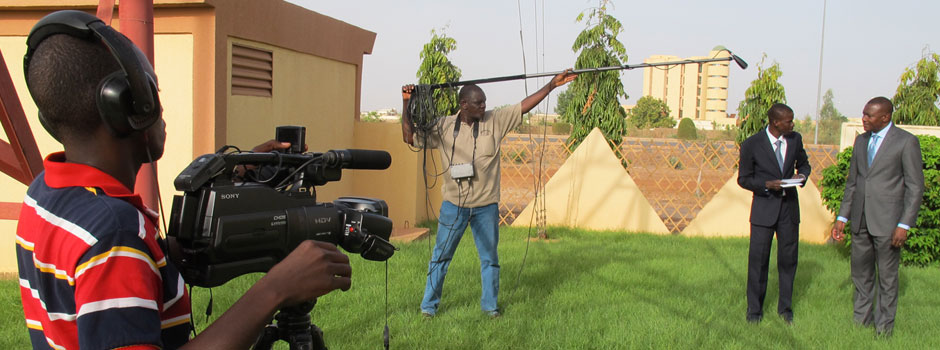The part of the TV cameraman.
- Always elect in-situ interviews :
The baker in front of his oven, the painter with his muse, the footballer training on the field… the interviewee… the atmosphere in which the interviewee lives his daily life enriches his words.
- Pay particular attention to the framing so that it produces information :
If the interview is long or likely to be partially covered during editing, the shots filmed with that goal in mind, illustrations or cutaway shots, must bring added value to the interview.
- Choosing the most appropriate framing :
– Close up : suggests intimacy
– Close shot : regular interview
– Full or long shot: suggests solemnity (official or public announcement)
- Minding the caption.
The framing of the interviewee must leave something like a fifth of the bottom of the screen for the caption identifying the name and job of the interviewee.
- Changing the frame or camera axis each time the topic changes.
- Check close ups to avoid parasites (a plant, a restroom sign…) before you start shooting :
The close up defines how just the long shot is.
- Check the background and wild noise aren’t distracting.
- Make sure the interviewee never directly talks to the camera For the interviewee’s eyes to be close to the lens without directly talking to it, the journalist must stand close to the cameraman and hold the mic with the arm opposite to the camera.
Other settings.
- The interviewer is in the frame.
The journalist stays in the frame if it brings added value: to show that he’s sharing the same experience as his interlocutor, or to highlight a step in the investigation.
- The scenarized interview.
It’s never a valid option, even if there’s no other way. It’s only ok if the interviewee agrees to do on camera stuff he would do anyway even if he weren’t interviewed.
- Walking interview.
It might revitalize the package and help reveal the topic treated in the interview in the background.
- Phone interviews are a non-solution.
Unless isolation, anonymity or emergency actually justify it, it’s better to take in your own commentary what you got told over the phone.

